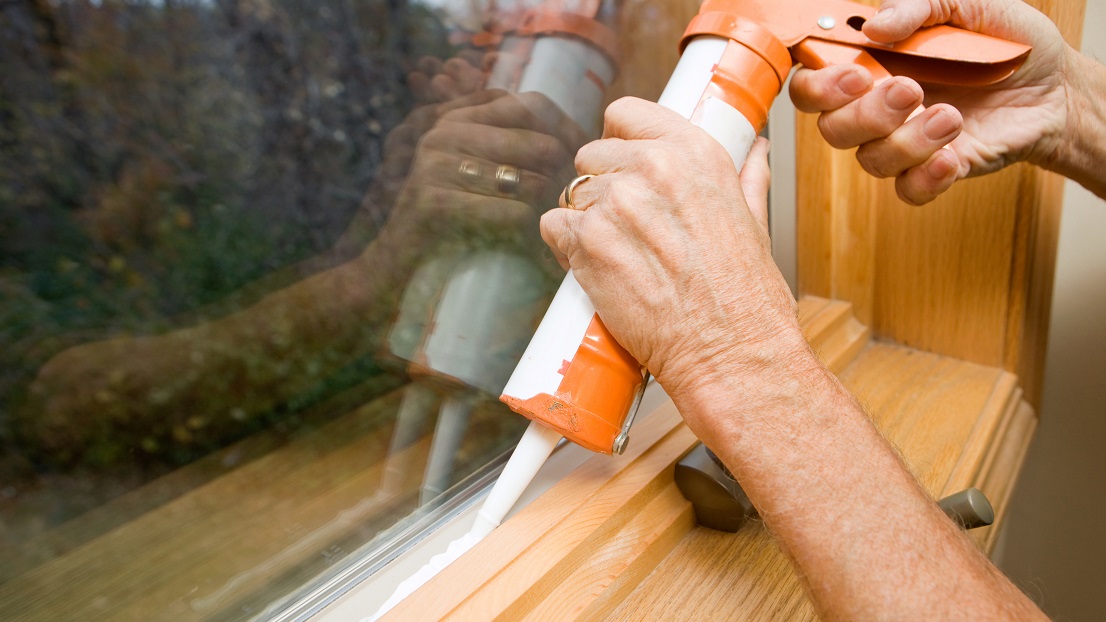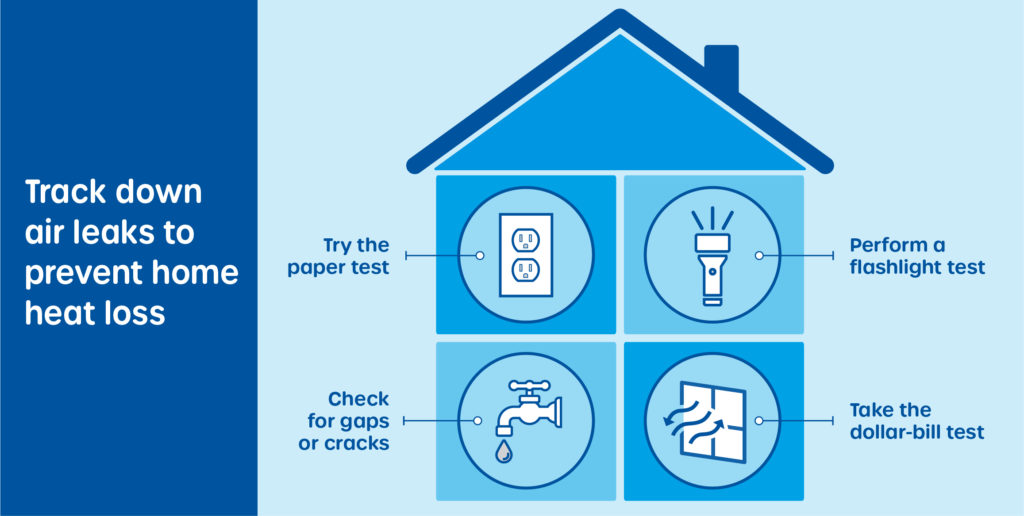Whether it’s an old farmhouse or brand-new construction, your house can develop air leaks over time. That allows heat to escape, which increases your electric bill.
In fact, most existing homes have so many air leaks that it’s like having a window open at all times. Sealing the leaks could save an average of 15% on your heating and cooling costs, but you have to know where to find them first.
Become your own in-house energy detective and start hunting for leaks with this checklist.
On the outside of your house, check for gaps or cracks where different building materials meet. Siding and chimneys, the foundation and brick or siding are often at fault. Also check exterior corners and outdoor faucets.
On the inside, check for cracks and gaps. That includes door and window frames, electrical outlets, switch plates, baseboards, fireplace dampers, wall-mounted air conditioners, attic hatches and recessed lighting, and areas where dryer vents, cable and phone lines pass through walls.
Perform a flashlight test. Pick a likely drafty spot, such as an exterior door. Ask someone to shine a flashlight through potential gaps from inside when it’s dark outside. Stay outside and see if light seeps through. Then, plug the gaps.
Take the dollar-bill test. Shut a door or window on a dollar bill. If you can easily pull it out, you probably have an air leak.
Try the paper test. Hold a piece of paper where there might be a leak, such as around an electrical outlet or window frame. The paper will move if there’s a draft.
Check insulation. Properly insulated walls help keep the warmth inside your home. Energy.gov offers a detailed list of how to evaluate your insulation and determine if it needs to be improved.
If you discovered any air leaks, the next step is to seal them. When gaps are less than a quarter inch wide, and located between stationary building components and materials, caulking is your best bet.
Use weatherstripping for components that move, such as doors and windows. Be sure to choose the weatherstripping that will withstand the friction, weather and temperature changes associated with its location.
Spending the time to find and repair air leaks will make your home more comfortable and save you energy and money.




We rent a small house. Our electric bill is around $300 a month. I think that’s way to high for our small house. What can we do to check and see why our electric bill is so high?
Good Morning Kim, There are a few ways to to track your usage and make adjustments to lower your bill. Please review your daily & hourly usage under https://www.pplelectric.com/analyze. You will be able to view the time of day when your usage is highest then make changes to lower your usage. You can also complete a home profile that will provide energy saving tips specific to your home under https://www.pplelectric.com/assessment. Check out tips to save energy and money at savewithppl.com. If you would like to speak to one of our Energy Education Representatives to discuss this further, please contact us at 1-800-342-5775 weekdays between 8am-5pm. Thank you for checking with us!